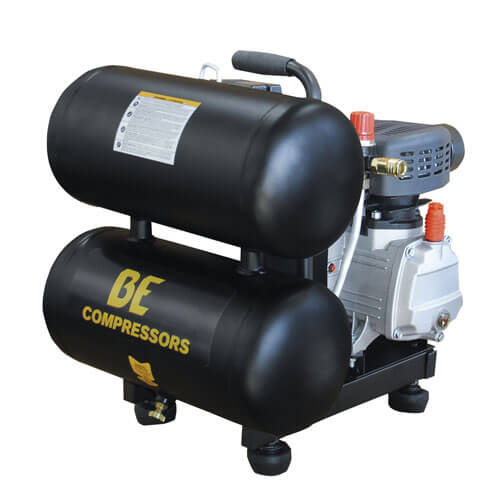How to Use Air Compressor
How to Use Air Compressor
There are five basic steps in the operation of gas or electric air compressors.
- Check the oil level to make sure the compressor is properly lubricated.
- Plug the unit into the correct grounded, 3-pronged outlet. Turn the pressure switch on and close the tank drain valve.
- Adjust the pressure for the tool you will be using and the job you will be doing. Never exceed recommended pressure for the tool or the job.
- When finished, shut off the motor, unplug the unit, and turn off the regulator valve. Then bleed the air out of the hose, remove the tool and open the regulator to bleed the air in the tank. If you have a quick connect, you must either remove the hose to bleed off the air from the tank or bleed the air through the drain cocks.
- After storing the hose, open the drain cock to release any accumulated moisture. Leave it open until the next time the compressor is used.
Various air compressor power tools to use with your unit.
Attachments
Now let's talk about the available tool attachments. If kept properly cleaned and lubricated, air tools are virtually indestructible. With few actual moving parts, maintenance is minimal. They run cool, since their power source is the compressor.
Perhaps two of the most obvious and useful tools are an inflation kit and quick connect couplers. The quick connect couplers make it fast and simple to change tools. The inflation kit attachments allow you to inflate everything from beach balls to automobile tires.
Blo-gun
This attachment is great for blasting away dirt, grease, and dust from hard-to-reach areas. Never point the gun at the eyes or other parts of the body.
Nail gun
Always be sure the gun is flat against the surface being nailed and know what is on the other side, so you won't cause damage or injury with the high pressure of the gun.

Air stapler
Again, be sure the stapler is flat against the surface being stapled. Larger staplers are available for attaching roofing shingles and so forth.
Air sander
The dual-action air sander should always be touching the surface when it is turned on. This type sander is frequently used in automotive work but many other uses around the house, such as rust removal or paint preparation, make it a handy tool to have.
Spray gun
This speeds up paint application and gives a smooth finish. There are a variety of spray gun designs on the market for various types of painting. Many times you can reduce the time required to do a job by 50% or more.
Sandblaster
This works well for removing rust and old paint and for preparing surfaces for painting. This same equipment can be adapted for use with soap and water for pressure cleaning such as degreasing auto engines and lawn and garden equipment.
Caulking gun
This tool takes the toil out of caulking, by giving a fast, uniform bead. Uniform and consistent pressure makes for a stronger bead. This tool can be used for any tube material such as adhesive or grease.
Air ratchet wrench
This is great for tightening bolts, whether building a deck, working on an automobile engine or installing a muffler.
Air hammer/chisel
The masters jobs from masonry to tailpipe removal. It must be up against the surface when started.
Impact wrench
This is used in automotive and assembly work.
Most air tools are available at hardware stores and home centers. Speciality air tools can be rented. Instructions for each tool attachment are included with the purchase or rental. Read these instructions carefully before attempting to use the tool.


